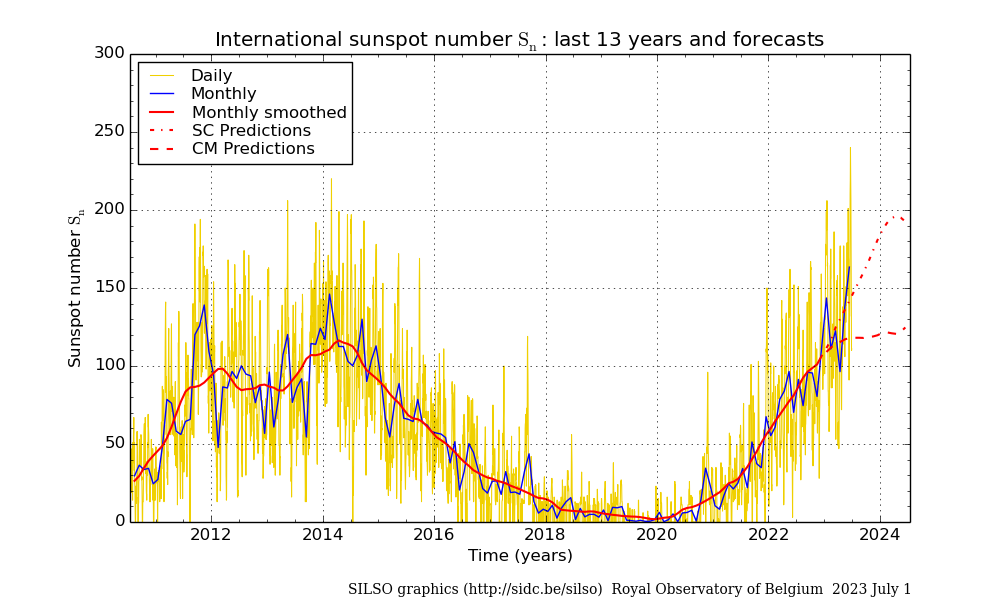It has been from 2002 since so many sunspots have been seen on the sun in a single month. It shows that the sun is becoming more active and the "storm season" on the sun is in full swing. It raises the concern on a very severe solar storm, where satellites and even power plants could fail. Should we be worried?
We got this question from a journalist.
The original online article: https://www.vrt.be/vrtnws/nl/2023/07/04/de-zonneactiviteit-piekt/ (Dutch)
Translation:
On Sunday, another very powerful solar flare erupted on the sun. It caused radio communication failures for 20 minutes (see the STCE news item https://www.stce.be/news/653/welcome.html), including in the western United States. Fortunately, the eruption was relatively short, so the consequences on Earth were limited. But it could have been worse.
Similar to weather on Earth, there is also weather in space. Space weather is determined by the sun and how active it is. During periods of high solar activity, there are many storms and eruptions on the sun. Solar flares, electrically charged particles and a wind of solar material can then disturb our magnetosphere and atmosphere.
We can sometimes see this as auroras. But when huge amounts of fast and energetic solar material reach us, communication and navigation satellites and even power plants can also fail and be damaged.
On average every 11 years, the sun's activity peaks. Right now, we are clearly heading toward a so-called solar maximum. Scientists predict the peak will be in 2024 or 2025. But according to some researchers, there are indications that the sun is more active than expected and that we will reach the peak sooner.

One such clue is the number of sunspots. These are dark spots on the sun's surface with strong magnetic fields. They appear dark because the temperature is lower compared to its surrounding. The number of sunspots is a measure of the sun's activity. The more sunspots, the more active the sun is.
More sunspots were observed in June than during previous months. The monthly mean total sunspot number in June 2023 was 163 (Check https://www.sidc.be/SILSO/datafiles) . It was from 2002 that so many were once seen in a single month. Still, it is not that exceptional, says "space weather person" Petra Vanlommel of the Solar Terrestrial Centre of Excellence (STCE). The institution is known worldwide for its research on the sun and space weather.
"You can compare it to the seasons on Earth, only on the sun there are only 2 seasons and they last plus/minus 5.5 years each," Vanlommel said. "But just like on Earth, one summer is not the other. And some summers are a warmer than others."
"Right now we are moving toward the high season, where there is a lot of solar activity, so it makes sense that we see more sunspots. If you compare with the previous solar cycle, which peaked in 2014, 2015 and was a rather low cycle, now we are indeed at a higher peak. But what we are seeing now is still within our expectation."
"But it is true that in the high season there is more chance of disturbed space weather, with more chance of solar storms. And therefore more chance of a major solar storm. But if and when that would occur is unpredictable."
"An extremely powerful solar storm is estimated to happen once every 100 to 150 years. The most severe solar storm measured to date occurred in 1859. 164 years ago. So the likelihood of another severe solar storm does increase."
"But even an ordinary powerful solar storm can already affect navigation and telecommunication. The impact of space weather is much greater today than it was 100 years ago, because we have now become much more dependent on technology that can be affected by it."
"So we keep a close eye on space weather and warn of necessary. But I wouldn't lose sleep over it."





